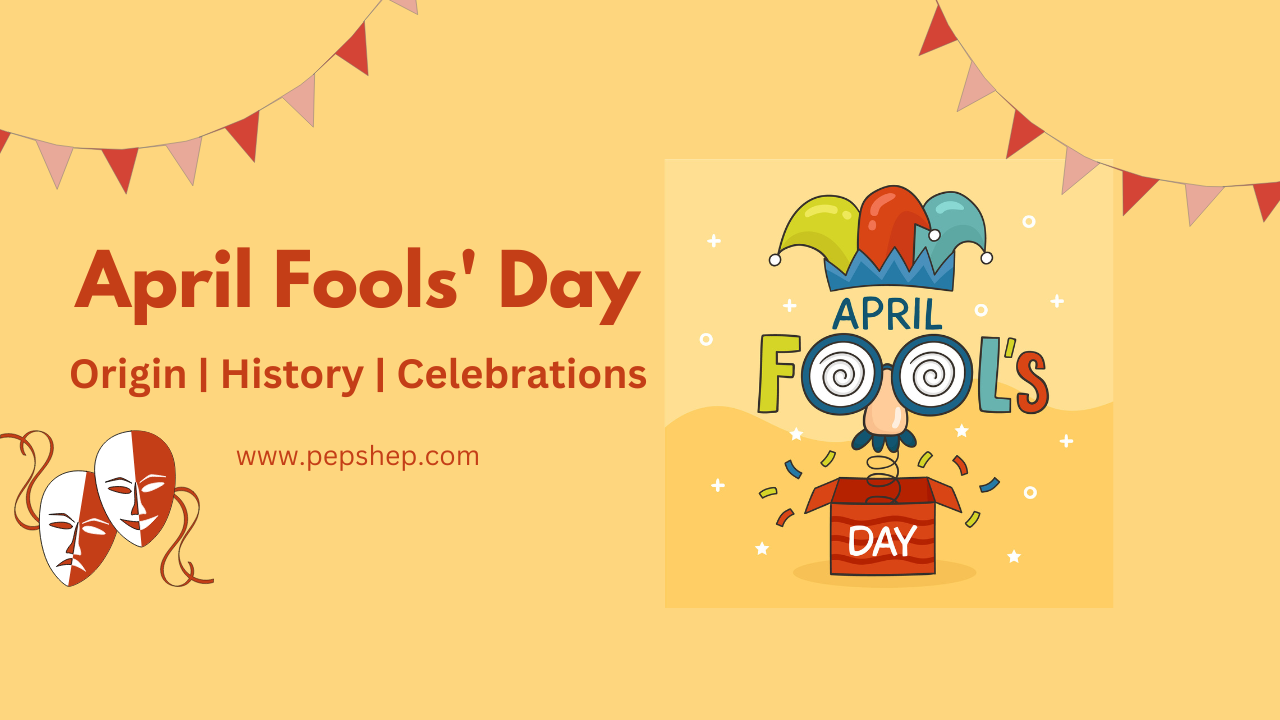

April Fools’ Day | Origin, History, Meaning, & Facts | Everything You Need to Know
April Fools’ Day, also known as All Fools’ Day is one of the most notorious celebrations in the whole world. It is globally celebrated on April 1 and is associated with hilarious pranks, practical jokes and fun.
However, just like its funny celebrations, its origin stories and variations across the countries are equally interesting and that’s what we are going to explore today. Let’s Go!
What is April Fools’ Day?
The festival April Fools’ Day got its name comes from the tradition of playing practical jokes on friends. The usual jokes include making fun of someone for having untied shoelaces or assigning them to tasks that are meant to be completed by fools.
Practical jokes, pranks, and scams fill the day and the tradition of yelling “April Fools!” at the target of a joke has been practised for hundreds of years.
Origin of April Fools’ Day
Several stories have been credited over the holiday’s beginning.
Many people attribute the tradition back to mediaeval France, where the 25th of March was New Year’s Day until the Julian calendar was changed to the Gregorian calendar in 1564. Before that, New Year’s celebrations ended on April 1. So, those who forgot to change the date and continued to party on 1 April were mocked and dubbed April Fools.
April Fools’ Day has also been compared to spring celebrations like Hilaria (Latin for “joyful”), which was observed by Phrygian followers in ancient Rome at the end of March, and the mediaeval Feast of Fools, where a Lord of Misrule was chosen to mock Christian rituals. Games, disguised costumes, and neighbour-mocking activities were all part of the festivities. This uproarious festival also provided commoners with a chance to impersonate nobility for nefarious purposes without facing consequences.
Others have noted that the day may have originated from the Indian celebration of Holi, which also occurs in March. The Festival of Colors is an annual celebration that includes food, dancing, and the throwing of the paint powder to celebrate the start of spring and the Hindu deity Krishna.
When Was April Fools’ Day Mentioned for the First Time?
The first definite reference to April Fools comes from a 1561 Flemish comical poem by Eduard de Dene. In the poem, a nobleman sends his servant back and forth on some annoying and meaningless errands. At the end of every stanza, the servant complains that he is being asked to do nothing more than a joke.
Hence, it became a fool’s errand!
How is April Fools’ Day celebrated in Europe?
Every nation has a distinctive method of tricking its victims on April 1.
To celebrate April Fools or April fish, it is customary in France, Belgium, Italy, and French-speaking regions of Switzerland to prank as many people as possible and shout “Poisson d’Avril” or “Pesce d’Aprile” (“April fish!”). Many people speculate that the fish might be a reference to young, catchable creatures.
In England, April Fools’ Day is only observed for six hours. The etiquette says that jokes and practical jokes are only allowed up until noon, at which point you are expected to confess to your practical jokes. Anyone making a prank after noon is recognised as the April Fool.
The two-day April Fools’ Day celebrations in Scotland are a lot more enjoyable. There it is named “Gowkie Day” because the cuckoo, or gowk, is a representation of the imbecile. This has caused some people to believe that the origin of April Fool’s Day was being a cuckold. People play practical jokes on each other on the first day, while on the second, known as Tailie Day, tails are placed on each other’s backs.
In contrast, dispatching someone on a “fool’s errand” is customary in Ireland. The victim is asked to send a letter that purports to request assistance. When the letter is delivered, the recipient opens it, reads it, and informs the courier that they will need to deliver the letter to a different recipient. This continues for some time until someone feels bad for them and displays the letter’s instructions, which are to “Send the fool to someone else.”
In the Netherlands, people frequently slingshot or catapult herring in the direction of their friends while shouting “Haringgek.” (“herring fool”).
A German prank known as an “Aprilscherz” involves telling one totally made-up, outrageous, but usually harmless, tale to trick other people.
These were some of the variations of April Fool’s Day celebrated in different countries. If you enjoy celebrating April Fools and have some hilarious stories to share with us, DM your story on our Instagram page – www.instagram.com/pep_shep.
- Books, celebrations, christianity, Diwali, Events, festivals, Gifts, global, green celebrations, love, mother, mother's day, nature, office, pets, quotes, social, social impact,